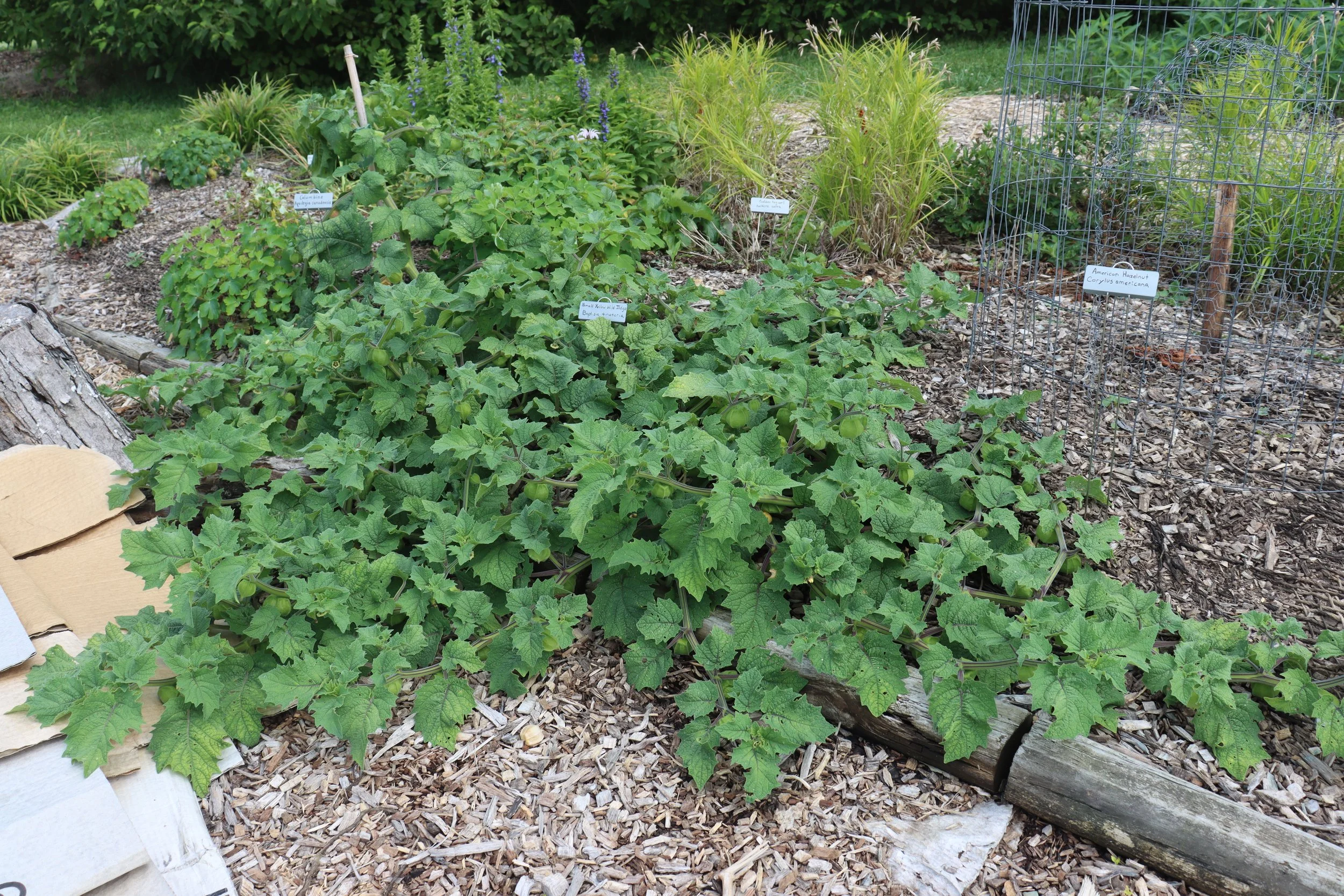My Personal Introduction story to a newly available Native Plant Agricultural fruit strain
I’ve always hated the taste of raw tomatoes to the point I would gag when accidentally consuming them. Knowing our native ground cherriy species of north america are in the same family as tomatoes; I was very hesitant to eat these native Annual Groundcherries (Physalis grisea) even after spending the energy growing them. In late June of 2025, I finally tried one, then one turned into many as they were so much sweeter than raw tomatoes; about 3 to 4 times sweeter. The flavor ratio was 85% subtle pineapple in flavor and 15% sweet tomato flavor with these first fruits eaten at a light yellow color stage. The tomato flavor was mostly concentrated in the skin. The pleasant fruity smell they left on my fingers had me sniffing all evening. Even though they have plenty of seeds in them, the seeds are very small to the point they’re undetectable as you eat the fruits. Nutritionally the seeds just count as part of the fiber content of the fruit.
These first Annual Groundcherry fruits were light yellow and I sensed it was only 85% ripe because at room temerpature the fruits would darken into a true gold color after a few days. So I decided to try a fully ripened Annual Groundcherry fruit, and was smacked in the mouth with an opposite flavor ratio of 75% sweet tomato flavor, and 25% subtle pineapple flavor. So it turns out, when the color of the fruit is light yellow, they are more pineapple flavored than tomato flavored. But when the fruit reaches its deepest ripening stage before decaying, the ratio flips into being a sweet tomato flavor accented by hints of pineapple. Based on your flavor preference, you could pick them at the light yellow stage or finish ripening them indoors in a mason jar at room temperature to get a more sweet tomato dominated flavor. The fruits have a long shelf life, and when picked at a yellow stage they can last in the refrigerator for up to 6 weeks. If the fruits are picked in a fully ripe gold stage, they can last in the refrigerator for 3 to 4 weeks.
Native Range
The recorded occurrences of Annual Groundcherry in the wild are uncommon. This is partly due to most botanists who make these herbarium records - not knowing how to separate this species from the more commonly recorded perennial Groundcherry species such as Clammy Groundcherry or Long-Leaf Groundcherry. Due to the lack of common knowledge about this species, it’s only been officially recorded in very few counties within the southeast, midwest, and northeast. Ecologically its value is the same as the more commonly recorded aforementioned perennial groundcherry species. From Maine to Minnesota, Florida to Eastern Texas and everywhere in between this plant grows well and is fruitful when tended by humans as a fruit crop.
How to grow native Annual Groundcherries - Physalis grisea
In mid spring when frosts are a low possibility; soak your ground cherry seeds in water for 24 hours inside a ziplock or plasticware - inside of your refrigerator to keep the water cold.
Sow the seeds in prepared/cleared beds covered in 1” of saturated compost. The compost will help keep the seeds moist encouraging quick germination. Sow by pressing 5 seeds into the surface of the compost and barely covering them with less than 1/10th inch of compost leaving them just under the surface. Plant groups of 5 to 8 seeds every 2 feet horizontally or vertically depending on the orientation of your bed.
They will germinate within 10 to 25 days depending on spring temperatures.
Typically conditions promote fruit maturity within 60 to 80 days of germination.
Easier than Tomatoes
2 Annual ground cherry seedlings produced 480 grams of ground cherry fruits (1.1 pounds) by August 19th and continued producing fruit until the end of September. These plants were sown directly into the ground in mid April. While they produce a large amount of leaves/vegetation to withstand the large caterpillars of Tomato Hornworms; they did not contract them as host plants this year. Instead other insects chewed small, inconsequential holes into the leaves. To maximize fruit production, I watered them once every 10 days once the summer temperatures soared into the upper 80’s and into the 90’s. Without the supplemental watering they would have still succeeded, though they would have been smaller statured and less fruitful plants as they would appear in the wild.
The mature Annual Groundcherry patch pictured above began growing through the chicken wire, using it as support for its thick branches. This growth pattern suggests they could benefit from tomato cages. If the cages are installed when they are young, they will grow their horizontal branches through the tomato cage after they gain height.
Pictured above is what Annual Groundcherry looks like in late summer if it isn’t watered often. It stays low to the ground instead of growing taller and shrubbier. The fruits are hidden underneath the leaves.
Annual Groundcherry produces small pale yellow blooms that are pollinated by small native bees and sometimes bumblebees.
Pictured above is a moderately ripe Annual Groundcherry next to an unripe groundcherry. Before picking the fruit you can tear open its “Hood” to see the color of the fruit before deciding to pick it. Near-ripe fruits fall to the ground or into your hand as soon as you touch them.
getting access to Native Annual Groundcherry Seeds
We grew Annual Groundcherry this year specifically to produce seed to distribute to the public in some fashion. We saw that the few Annual Groundcherry sources on the internet were unpredictable as far as what species would actually grow from the seed - sometimes even non-native ground cherries are labeled as this native Annual Groundcherry (Physalis grisea). We feel this is a very fun and rewarding native crop for foragers and native plant enthusiasts to produce without much effort so we painstakingly harvested, cleaned and preserved the tiny seeds from our Annual Groundcherry production patch this September (of 2025).
Whether or not I can distribute these seeds is a matter of personal health status. We’ve been able to do 9 Native Seed mix sales in 2025 up to the date of 11/1/2025. If I’m able to do more native plant sales of any kind, that’s where you could find the Annual Groundcherry seed packets for sale. Sign up for our email list at the bottom of the webpage to be notified of our future native plant sales.










